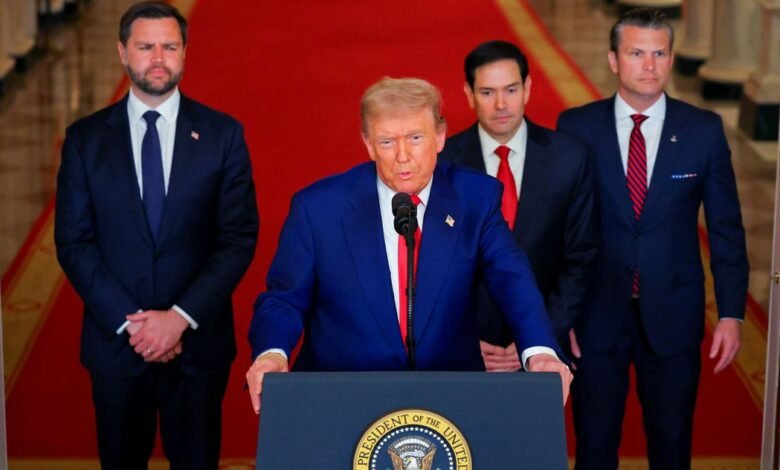What Was Real Impact of U.S. Strikes on Iran? Live Updates.

Both the New York Times and the Washington Post have closely examined the recent satellite imagery of the site, before and after the U.S. attack. From the Times’ report:
A New York Times analysis of satellite imagery shows that the United States targeted Fordo, Iran’s underground nuclear enrichment facility, at the precise locations of two structures that experts said might be ventilation shafts. The structures were visible only during the early stages of the plant’s operation, and could be seen in satellite images in 2009. By 2011, both were no longer visible. Experts said they might be ventilation shafts used during the plant’s construction, and then buried …
Given that the U.S. attack appears to have targeted the area around the two structures, “I would assume the U.S. has active intelligence that seems to indicate that those shafts were structural weaknesses,” said Joseph Rodgers, a nuclear expert at the Center for Strategic and International Studies, a research institute in Washington.
Satellite imagery taken by Maxar Technologies on Sunday showed debris scattered around the large complex, but the site’s support buildings appeared intact. That indicates, Mr. Rodgers said, that “the key target was really how to destroy the structure underground,” and that the attack was most likely not trying to take the facility offline by targeting other support infrastructure.
The images do not definitely reveal how much damage the strikes did to the site. Former CIA analyst Ken Pollack shared his own impressions with longtime foreign-affairs reporter Laura Rozen for a post on her Substack, Diplomatic:
“We don’t know what the American strike accomplished,” Pollack, now president of the Middle East Institute, said on an MEI virtual panel on Sunday.
“We’ve heard the initial briefings,” he said. “I did look at the satellite photographs of Fordo. There are a couple of holes, and it’s clear that the surface earth has shifted. But I find it very difficult to tell what the extent of the damage that was done to Fordo. And quite frankly, I am going to be surprised if the US intelligence community has a really good read on what happened to Fordo.”
“It looks like we put multiple munitions down the same shaft,” he said. “But we don’t know for certain what wound up happening down at the bottom.”
Both the Times and Post analyses highlight the activity around the site in the days before the attack. From the Post’s report:
Satellite images from the days before the U.S. strike showed “unusual truck and vehicular activity” at Fordow, according to a senior analyst at the satellite firm Maxar Technologies.
On Thursday, there were 16 cargo trucks along the access road leading to the underground military complex. Images taken the next day show that most of the trucks had moved a little more than a half-mile northwest, farther from the facility, according to the analysis. Other trucks and bulldozers were positioned near the site’s entrance, including one truck directly next to it.
Spencer Faragasso, senior research fellow at the Institute for Science and International Security, who reviewed an image taken Saturday before the strikes, said among other reasons, the Iranians may have backfilled the tunnels as a precautionary measure to prevent the spread of hazardous material.
“They probably shut things down and removed what they could, then sealed it up,” Jeffrey Lewis, director of the East Asia Nonproliferation Project at the Middlebury Institute’s James Martin Center for Nonproliferation Studies, said in a message, leaving Washington and Jerusalem to play “whack-a-mole with Iran.”
Now, the tunnel entrances near where trucks were seen appear to be filled with dirt, either from the shock wave of the bombing or from previous Iranian activity.
Source link





